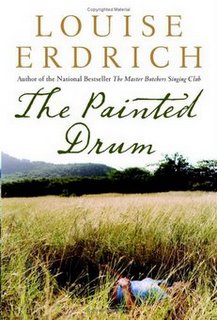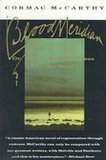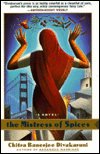
When I first read about this book I was a bit turned off, so was very surprised to find a novel that I liked enormously. It’s a social satire/novel of manners, a bit slow at first until you start catching on that the main character says one thing in a given situation but lets you know what he ‘really’ thinks. He’s not the narrator though, but a “center of consciousness” (Henry James style—fittingly since Nick is a recent Oxford grad come to London to work on a doctorate with a dissertation on James). The narrator soon lets you know that all of the characters have their inside and outside views and the book is all about recognizing what’s under the surface, not only of the characters themselves, but of the era (The Thatcher years).
It’s the story of Nick Guest whose name is significant in a number of ways: first, he’s a guest, living while he studies, in the posh (Kensington Park Gardens) house of an MP, the father of an Oxford friend with whom he’s secretly been in love for years. Toby, the son, is off on his own and the inhabitants of the house are father Gerald Fedden, MP and rising star in the Thatcher government, Rachel, beautiful wife who’s from a very wealthy family—brother is a Lord with a family estate—and Catherine, younger sister of Toby, who’s a bit wild and has some psychological and personality problems. Nick’s name also recalls two other literary Nicks, those from Anthony Powell’s A Dance to the Music of Time and from F Scott Fitzgerald’s The Great Gatsby—both fascinated by and observers of the upper class. Remember FSF’s “the rich are different from you and me”. This Nick, though, is not the narrator, but more a Jamesian “centre of consciousness” (a point of view HJ describes in The Art of Fiction as what the writer would see if he could see through the back of the character’s head and understand the world from his point of view, but also see the outside world). Turns out to be used very effectively by Hollinghurst.
Nick is homosexual, recognizes it and is “out” in his way, but he’s very young and has never had a homosexual relationship. So he writes a letter to a dating service and meets Leo, a lower middle class black of Caribbean descent, older and more experienced than Nick, who lives with his mother (heavily religious) and sister in a small flat in the northern suburbs. Their first sex—neither having a place of their own—happens in the private garden at the Feddens—one of those private gardens in Central London with high iron gates where only the householders have a key.
The novel has some wonderfully drawn characters, even the “Lady” herself (as they call Thatcher). Gerald Fedden’s goal in life is to have her visit socially which finally happens when she attends his Silver Wedding Anniversary party. The scene is marvelously done. Gerald is shallow and self-centered, his wife Rachel is beautiful, kind and sort of “dreamy”. The daughter Catherine has various unsuitable boyfriends and muddles along, with the help of a psychiatrist—and with Nick as her main ally at home. Then there’s Toby, who loves Nick but not sexually, and Wani, an Oxford chum of both who’s the son of a super rich Middle Eastern immigrant (one reviewer likened him to Doti Fayed)—gay like Nick and they eventually have a secret affair. They also go into business together, putting out an elegant journal which Nick names Ogee after the curve with Hogarth called, "the line of beauty"--hence the title, though "the line" recalls also the frequent lines of cocaine used increasingly by Nick and Wani and Toby.... The business also plans what Nick imagines as a Merchant-Ivorie-type film of James' novel, the Spoils of Poynton which Nick will adapt to film.
The novel begins in 1983 and is divided in three parts, the other two happening in 1986 and 1987, and the reader gradually comes to realize that this is the crucial beginning of the AIDS epidemic that will devastate the gay community. I didn’t put this together at first so it only gradually dawned on me—which is, I think, what the author intended.

 Initially I was enchanted with The Painted Drum. I found the first character’s musing interesting and the language in places was stunning. She described the eyes of a character as “peach-colored granite with specs of angry mica”. I was also intrigued by the theme of life and death, the presence of the dead in the lives of the living, particularly as influenced by Ojibwe thought.
Initially I was enchanted with The Painted Drum. I found the first character’s musing interesting and the language in places was stunning. She described the eyes of a character as “peach-colored granite with specs of angry mica”. I was also intrigued by the theme of life and death, the presence of the dead in the lives of the living, particularly as influenced by Ojibwe thought.








